Ragie Connect: Build RAG Apps Over Users' Data in No Time
Setting up a RAG infra from scratch can be an absolute nightmare. Here’s what you must build:
- OAuth for third-party data integrations.
- Designing UIs for ingesting user data.
- Continuous sync for data updates.
- Enabling user data partitioning
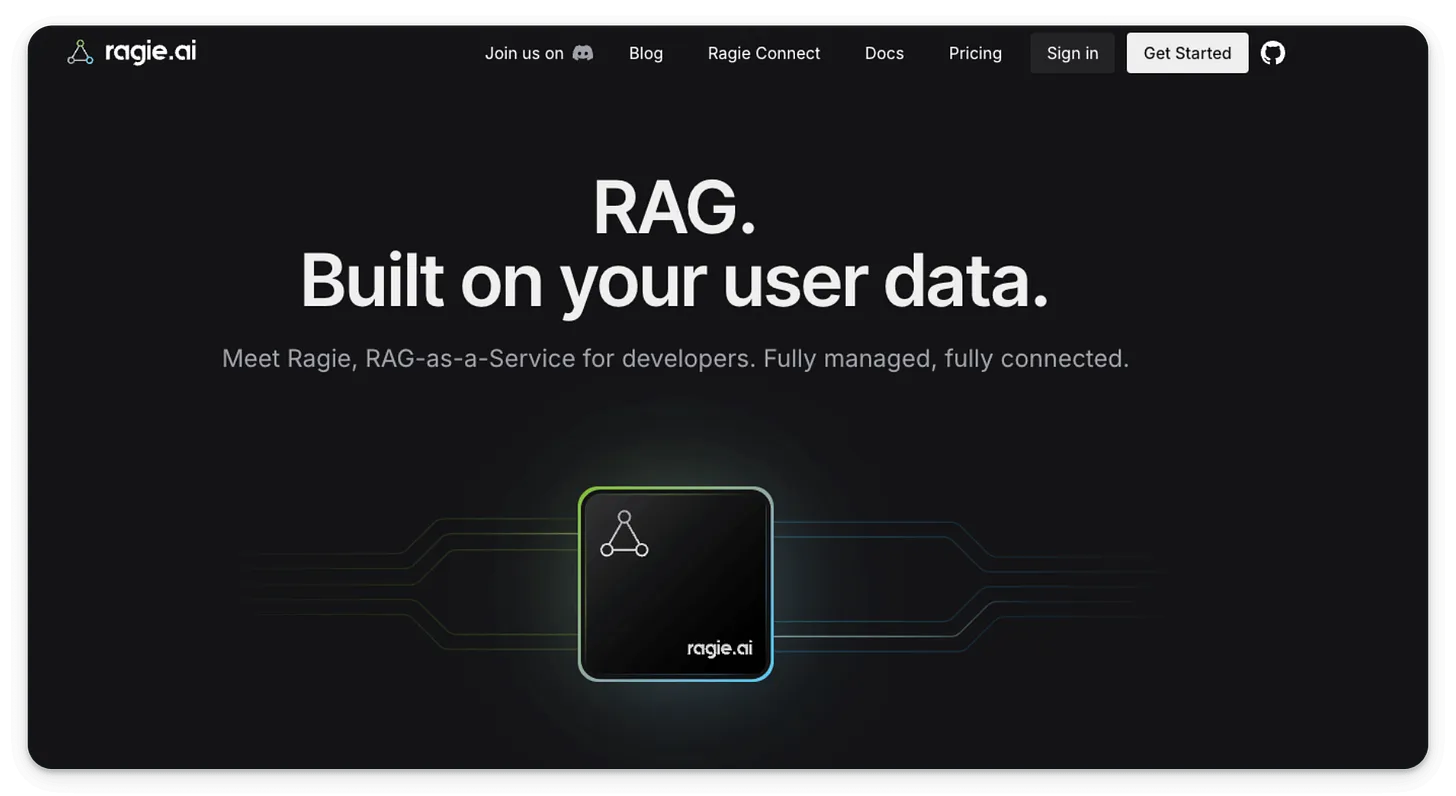
Ragie Connect provides the complete infrastructure to handle authentication, authorization, and syncing for your users’ data from several sources:
- Google Drive
- Salesforce
- Notion
- Jira
- etc.
If you’re looking to integrate RAG into your platform in no time, start with Ragie.
RAG over GitHub repos
Continuing the discussion from Ragie...
Today, let's show you how we built a RAG app over GitHub repos using:
- GitIngest to parse the entire repo in markdown.
- Llama-3.2 as the LLM.
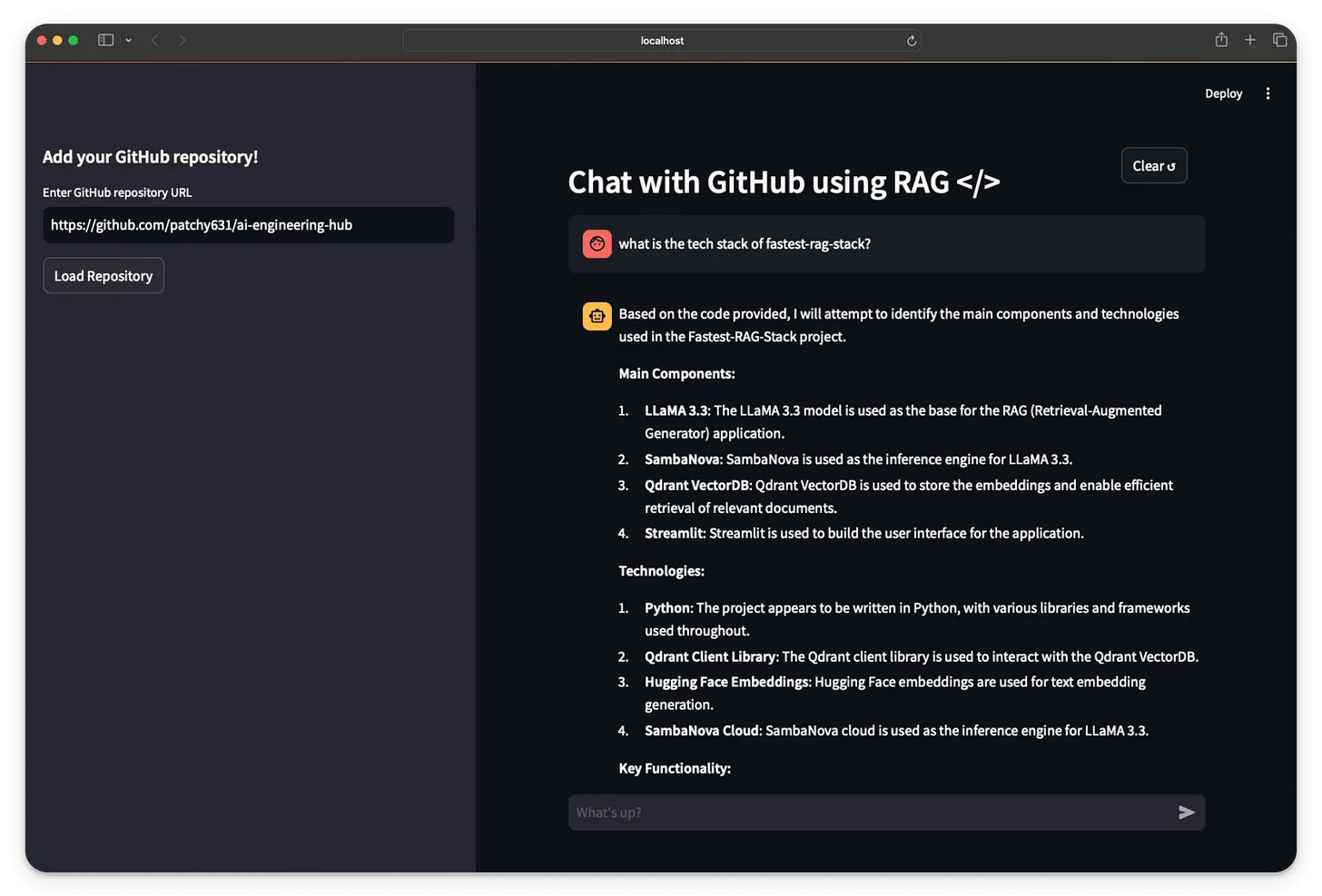
Let's build it now.
Step 1) Parse GitHub
GitIngest turns any Git repository into a simple text digest of its codebase. It provides the summary, the directory structure and parses all files to markdown.
We use this as follows:
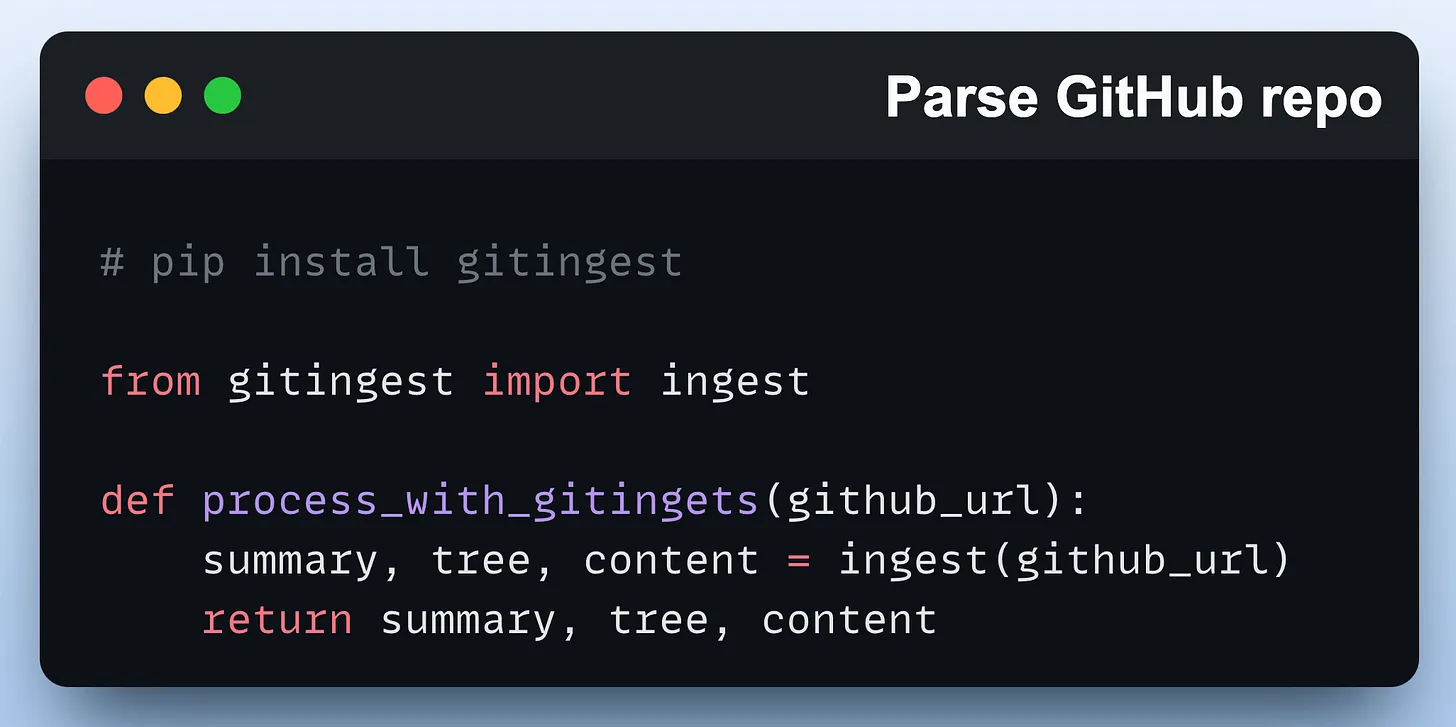
We also save the above content to a local file, which is then loaded with LlamaIndex's SimpleDirectoryReader as follows:
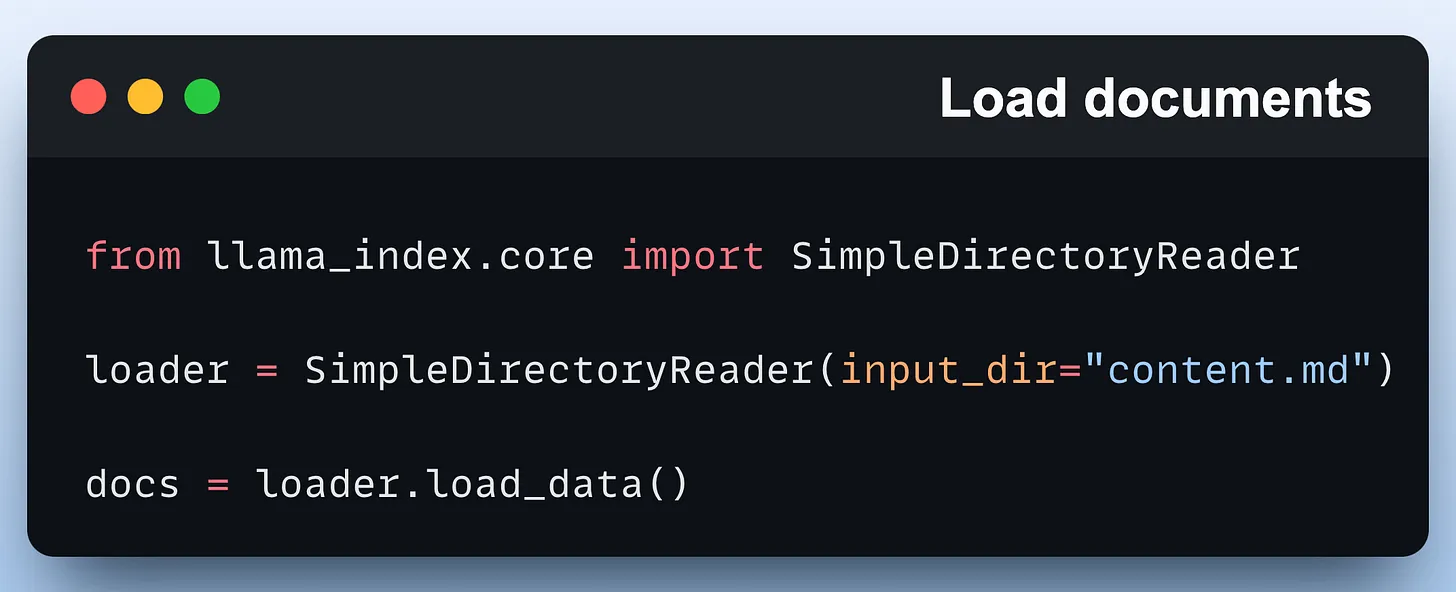
Step 2) Set up LLM and embedding model
Since our knowledge base is ready, we set up the LLM and embedding model.

- We use Ollama to run the LLM locally.
- And an embedding model from HuggingFace.
Step 3) Embed data, create an index and chat
We pass the documents loaded documents (docs = loader.load_data()), create a vector store below, and then chat with the repo as follows:
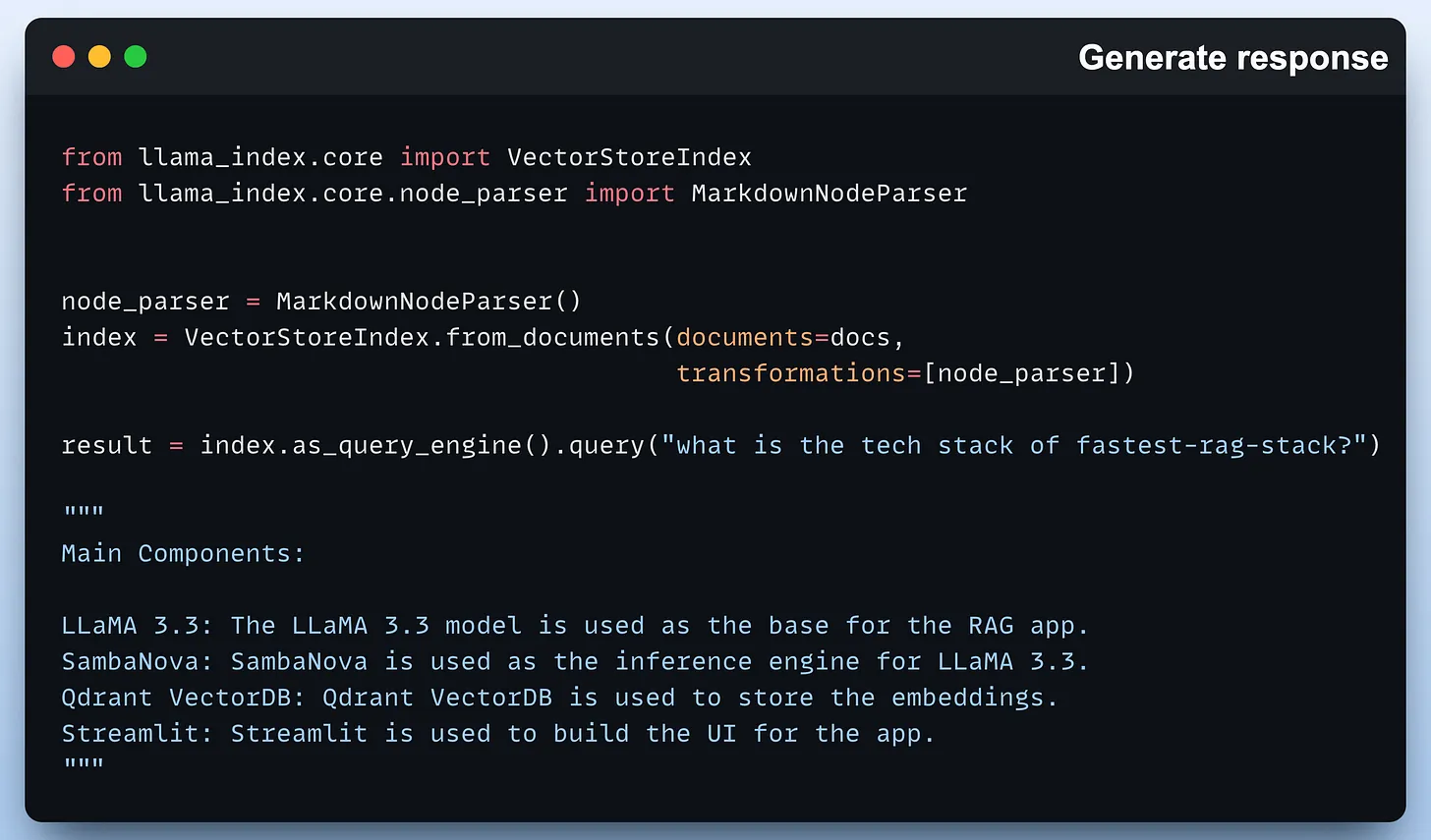
Done!
There’s some streamlit part (full code here) we haven't shown here, but after building it, we get this clear and neat interface:
.jpg)
- Tags:
- ai-agents

Comments
Loading comments...